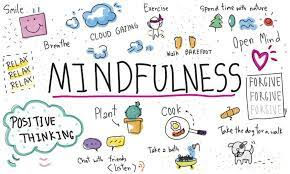Mindfulness Skills by Therapist Aid, 2015
- Katherine Victoria Vananderland
- Apr 6, 2021
- 2 min read


Spending a lot of time in your head causes stress. There are always new things to worry about, conversations to rehearse, and activities to plan. Research tells us that when you live in the moment--that is, getting out of your head and being consciously aware of your surroundings--you will usually feel happier and experience less stress. With enough practice you, will learn to better control your thoughts and feelings. Below are some techniques to help you achieve this goal.
Mindful Activity
The goal of a mindful activity is to bring your thoughts into the present moment. To practice, first choose any activity where you notice your mind consistently wanders. This could be your commute to or from work, completing chores around the house, or just about anything else. Next time you do your chosen activity, attend to each of your senses. Below we use the example of going for a walk. It will be best to choose any activity you do regularly so you are sure to practice every single day.
Vision: As you leave your home you immediately notice the bright blue sky, trees, and empty streets. As you pay closer attention you notice flowers along the sidewalk with a slight breeze causing them to tilt to their side every few moments.
Hearing: Each time the breeze passes, you can hear the leaves rustling in the wind. Occasionally, you here the hum of a car passing on a nearby street. Birds are chirping somewhere up above.
Touch: You notice the warmth of the sun and the coolness of the breeze. With each step you feel your foot landing and then pushing off from the pavement.
Taste: You stop to pick up a coffee for your walk. You hold the drink in your mouth for a moment to savor the taste.
Smell: When the breeze floats by, you catch the smell of the flowers and the trees. As you continue your walk, you notice the smell of freshly cut grass by a neighboring home.


Source: Aid, T. (2015). Mindfulness. Retrieved April 6, 2021, from https://www.therapistaid.com/worksheets/dbt-mindfulness-skills.pdf
1. Gratz, K. L., Tull, M. T., & Wagner, A. W. (2005). Applying DBT mindfulness skills to the treatment of clients with anxiety disorders. In Acceptance and mindfulness-based approaches to anxiety (pp. 147-161). Springer, Boston, MA.
Please check this for when you start to feel an attack these skills can ward off the negative intrusive thoughts.
Source: Grounding Exercises. (2018). Retrieved April 6, 2121, from https://www.therapistaid.com/worksheets/grounding-techniques.pdf









Comments